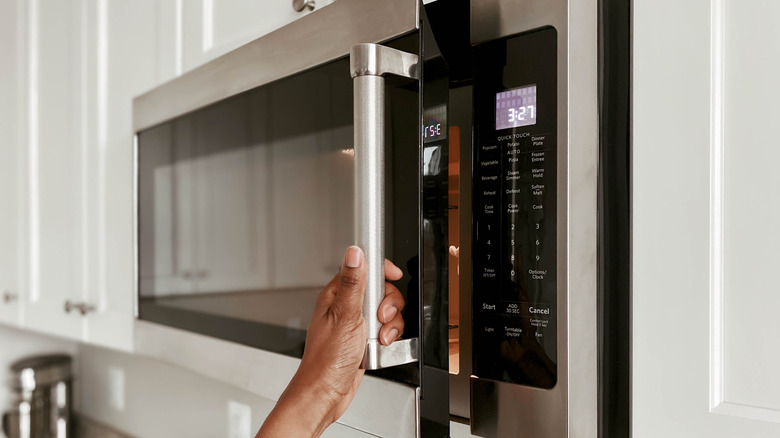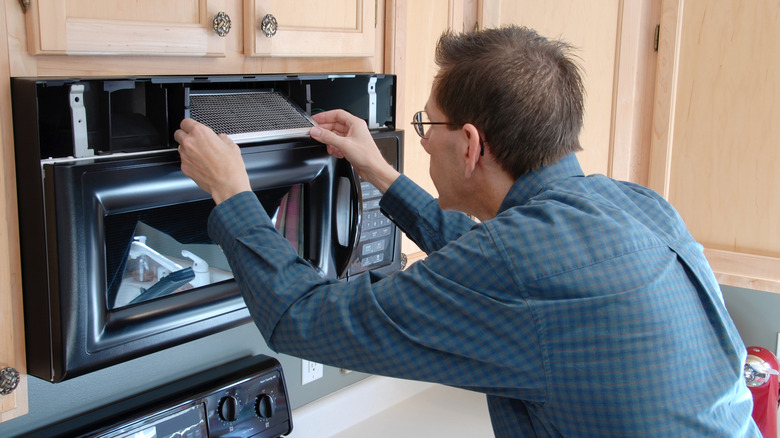How To Figure Out If Your Microwave Has A Grease Filter (And Why It's So Important)
We may receive a commission on purchases made from links.
Over 90% of American households own a microwave, though a large number of them likely do little more with it than heat their food. While not knowing whether your microwave's preset buttons actually work is normal and acceptable, one thing you should be aware of is whether your microwave has a filter. Microwave filters are typically found on over-the-range microwaves and not on models that sit on or under countertops. If you have an over-the-range microwave and you're unsure if it has a filter, you can usually find it either on the very bottom or very top portion of the appliance. If you still aren't sure, check the manual that came with the appliance or call the manufacturer's customer service to find out.
The purpose of the filter is to clean the air in your kitchen, primarily any grease or steam that rises from whatever you cook on the stovetop. This is great for your kitchen ventilation, and it lowers humidity that can cause everything from stinky kitchen drawers to faster food spoilage. The filter works hard for your kitchen, but it has to be kept clean. When a microwave filter isn't maintained, it can cause buildup that's damaging to the microwave, preventing it from working as well as it once did. A dirty microwave filter can even be a fire hazard due to the grease and debris. This grime can prevent proper ventilation, making the microwave work harder and risk overheating every time you want to warm something up.
Taking care of your microwave grease filter
Once you've located your microwave filter, it's important to know the type and how often it needs maintenance. There are two varieties of filter; one is a charcoal filter, which needs to be replaced once it's too dirty, as it can't be washed. You can either find one specific to the microwave brand, or you can opt for a cut-to-fit style filter. The second type is a metal filter, which can be cleaned and reused as needed. The filter should, at a minimum, be maintained every three months or so. However, those who use the fan and stovetop more often may have to check on the filter sooner. The frequency also depends on what you're cooking. Someone who cooks greasier foods will likely need to clean the filter more often than someone who does nothing but boil water.
You'll know your filter needs to be cleaned or replaced if it develops a yellow or brown tinge, becomes very sticky, emits an unpleasant odor, or if the vent system stops working well. For specific tips to clean and replace your filter, check your microwave's instruction manual. Once you've got a good method down, make taking care of your microwave grease filter one of your new kitchen cleaning magic tricks, to keep everything running smoothly and safely.

